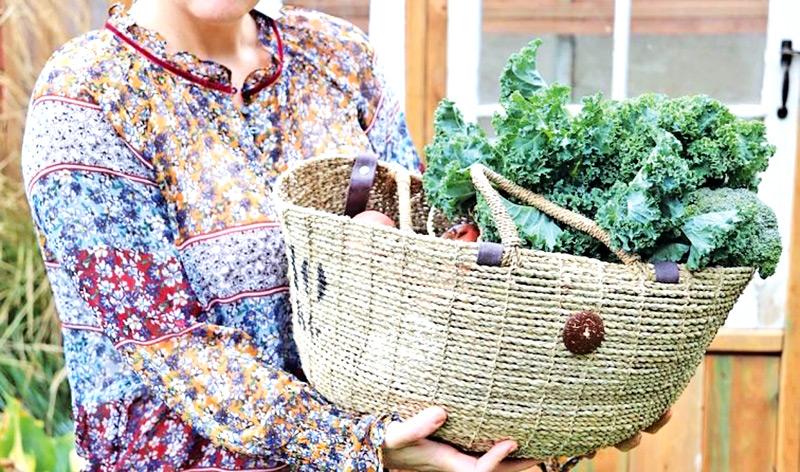
Sustainable Living is lifestyle and philosophy, sustainable living is as popular a term as it is nuanced. It is encouraged by renowned activists, NGOs, and lifestyle blogs and used in marketing and advertisements from cotton t-shirts to water-efficient showerheads. But what does it really mean?
 Broadly, sustainable living comes down to choices and behaviours that focus on living within our means to encourage human and environmental health. Practicing sustainability in our household (like compositing), community and lifestyle ensure we prioritise the use of renewable resources without compromising the ability of future generations to meet their own needs.
Broadly, sustainable living comes down to choices and behaviours that focus on living within our means to encourage human and environmental health. Practicing sustainability in our household (like compositing), community and lifestyle ensure we prioritise the use of renewable resources without compromising the ability of future generations to meet their own needs.
But sustainable living is not just about the individual.
What is the goal of sustainable living?
The connection between sustainability and how we live our lives has its roots in a much larger, global principle. First defined by the Brundtland Report in 1987, the notion of sustainability - then termed sustainable development - aimed to present environment-related issues and challenges in the context of political, social, and economic development.
Central tenets
Today, the central tenets of sustainability are emphasised by the United Nations’ Sustainable Development Goals (SDGs), which seek to preserve the planet for future generations by addressing climate change, energy use, land and water management, and consumption.
Much like it is wide-reaching, sustainable living can mean different things to different people.
Picked up by revenue-seeking companies and brands, sustainable living trends are an opportunity to greenwash products and enter the eco-market.
Traditional ecological knowledge
For indigenous people and their communities, values of sustainability are culturally entrenched. Though not all traditions can be generalised, the basic environmental knowledge derived from historical traditions and experiences of a group is defined as traditional ecological knowledge (TEK). Acknowledging the ecological effects of biodiversity, and the ways in which human activity can impact the carrying capacity of an environment, TEK is the blueprint for what we recognize today as sustainable living.
And for others, sustainable living can have no cultural significance at all, but instead, be a type of lifestyle that depends on their socioeconomic status. Making sustainable choices and investments can be expensive, and depending on one’s existing needs and means, a sustainable lifestyle is not always accessible.
Simply put: sustainable living is not a perfect system. Rather, the shift towards sustainability in our homes, communities, and lifestyles is a process of change that looks different for everyone. Coming back to the Brundtland Report, they summarise it quite well:
“It is not a fixed state of harmony, but rather a process of change in which the exploitation of resources, the direction of investments, the orientation of technological development, and institutional change are made consistent with future as well as present needs. We do not pretend that the process is easy or straightforward.”
Why Sustainable Living Matters?
Sustainable living highlights individual actions to lessen our impact on the planet, but do our choices actually make a difference? The simple answer is yes, but there’s more to it.
Addressing sustainability challenges related to climate change and environmental degradation, individual choices don’t make the difference, but they do make a difference.
Individual actions are a part of the collective, they are valuable contributions to a larger, stronger movement aimed to reduce human impact on the environment. Similarly, in living a sustainable lifestyle, the benefit goes beyond your own household - the community, economy, and environment thrive.
When you chose to buy produce from your local farmer as part of an effort to eat a more plant-based diet, you are 1, reducing your risk for chronic illness by eating cleaner; 2, contributing to the community economy by shopping local; and 3, reducing greenhouse gas emissions by limiting the travel required for the produce to get to you. Sustainable living goes beyond the self, and individual actions do make a difference. But it is important to note that the onus is not exclusively on the individual.
Global industrial emisions
Over half of global industrial emissions since 1988 can be traced to just 25 corporate and state-producing entities - nearly 500 gigatonnes of CO2e over the past 30 years. To put this statistic into perspective, the average Canadian produces 15.6 tonnes of CO2e per year. This startling dichotomy has been the source of a contentious debate among the international community. Why advocate for individuals to adopt a sustainable lifestyle when there is a widespread lack of accountability among governments and top polluters?
The answer to this question rejects the question itself!
Debating individual versus collective action is an unfortunate mistake in the conversation surrounding climate action and environmental protection. Advocating for individual behaviour changes does not distract from the necessary political and systemic action needed to address the planet’s environmental crisis.
Rather, individual, collective, and political actions are self-reinforcing, working together to strengthen, deepen and expand the environmental movement. There is no zero-sum game in environmental activism.
